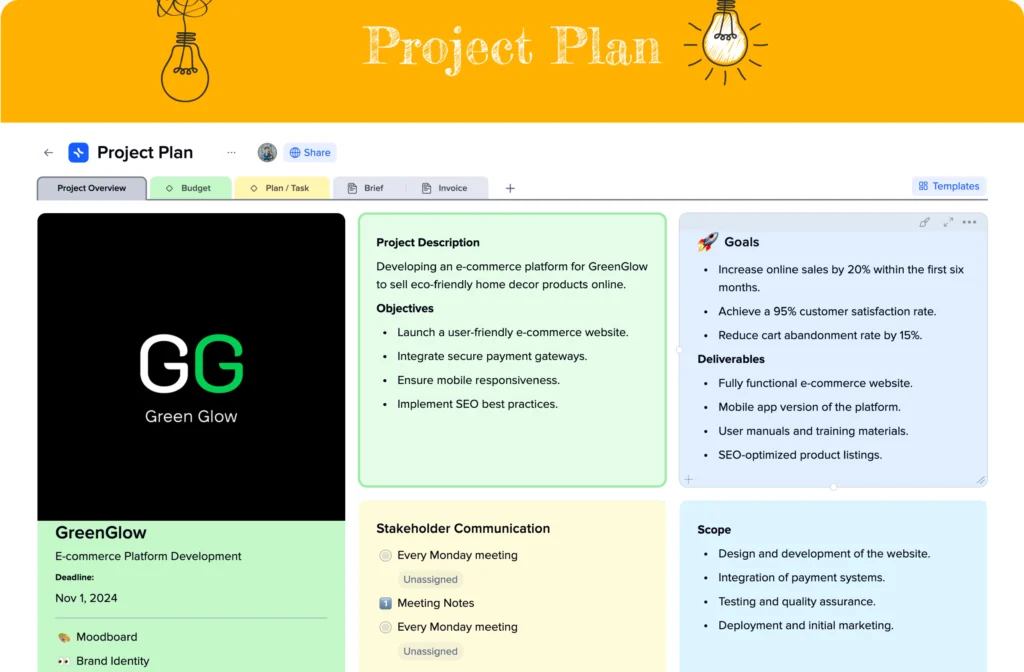Lean canvas template
Your ideas should live elsewhere except your head, and a lean canvas is the best tool to extract and formulate them as a possible business model. It saves the time you usually need to present your idea to your stakeholders, boss, teammates, etc.
A lean canvas model’s predefined structure perfectly covers the most important elements of a business model in a well-defined and concise way to articulate your message.
If you ever felt like putting your idea or intent into words, pictures, video, or any other type of expression tools is not enough, a lean canvas template will help you.
The xTiles Lean Canvas Template is a powerful tool with the visual and content potential to showcase your idea in the best possible light and the ability to tailor the structure according to your idea’s specifications. Additionally, it saves time and resources by clearly identifying where they are needed and what is irrelevant or not important.
We offer you a ready-to-use Lean Canvas Template, a detailed step-by-step guide on how to create your own, and a lean canvas example to help you.
What is a Lean Canvas?
The lean canvas provides a framework to articulate the key elements of a business model in a concise and structured way. It’s a one-page document where you brainstorm key aspects of your potential business, startup, project, etc. You get the ability to showcase your ideas without spending too much time on creating a traditional business model.
A Lean Canvas was developed by Ash Maurya as an adaptation of the traditional Business Model Canvas created by Alexander Osterwalder. Both of these documents use the same nine blocks, except the lean canvas’ structure is slightly changed to be more time-effective and easier to use.
If there was some kind of competition, Lean Canvas VS Business Model Canvas, the lean canvas would probably finish a bit faster because it’s more user-friendly for people with no or little experience managing businesses or startups.
As a rule, a lean canvas is usually used in the early stages of a startup to validate a business idea. However, it’s perfectly suitable for being applied later to refine an existing business model.
A lean canvas document consists of nine building blocks:
- Problem – the pain point a business/startup/project wants/tries to resolve.
- Solution – the product or the service offered to resolve the problem.
- Key Metrics – the measurable indicators to track the progress.
- Unique Value Proposition – the statement to communicate the unique benefit of the business/startup/project to the potential customer.
- Unfair Advantage – the competitive advantage the business/startup/project has over its competitors.
- Customer Segments – the description of the target audience of the business/startup/project.
- Channels – the way/ways in which the business/startup/project reaches its customers.
- Cost Structure – the list of the required expenses for operating the business/startup/project.
- Revenue Streams – the list of the revenue streams for the business/startup/project.
What is the purpose of a Lean Canvas?
A lean canvas helps entrepreneurs with many aspects of representing and articulating their ideas:
- It helps to identify the target audience and understand their needs, expectations, pain points, and behaviors.
- Develop a unique value proposition that will match the target audience’s pain points and help the business stand out.
- Test and validate the assumptions about the business model and future strategy by gathering feedback from stakeholders and everyone involved.
- Find the most efficient channels to reach and acquire customers.
- Identify potential revenue streams and prioritize them based on their profitability and feasibility.
























